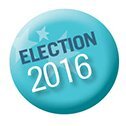As part of his pledge to “make America great again,” Donald Trump wants to spend less on schools and get better test scores.
Speaking at a rally in Tulsa, Okla., on Wednesday, Trump, a business executive and a frontrunner for the Republican presidential nomination, lambasted the performance of American public schools students compared to their peers around the world. He said he was especially appalled because of all the money that goes to education in the U.S.
“We’re number one in terms of cost per pupil by a factor of, worldwide, by a factor of many. Number two is so far behind, forget it,” Trump said. “So we’re number one in the world in terms of spending. We’re number twenty eight in the world in terms of, where do we stand? We have third world countries that are ahead of us, countries that you wouldn’t believe, some countries that you’ve hardly heard of.”

Trump said he envisioned a U.S. educational system that spends much less than it does now, but gets top-drawer results.
The PISA Numbers
So do international test scores, and our national education budget, back up what Trump’s saying?
Let’s turn to the most recent results from the Program for International Student Assessment, commonly if not always fondly known as PISA. PISA is administered in reading, math, and science. Scores remained stagnant in 2012, the most recent year from which data is available. And here’s how my coworker Liana Heitin summarized the performance of U.S. students relative to their counterparts on the 2012 PISA:
- Nineteen countries and education systems outranked American students in reading, up from nine in 2009.
- Twenty nine nations and other jurisdictions outperformed Americans by a statistically significant margin in math, up from 23 in 2009. (So Trump is relatively close to the right answer when it comes to math.)
- Twenty two education systems outperformed U.S. students, up from 18 in 2009.
Based on those comparisons, it’s not clear where Trump got the figure that we’re ranked 28th as far as PISA goes. But Trump certainly isn’t alone in his general displeasure with the recent PISA results.

As for Trump’s claim that Third World countries are cleaning America’s clock? Once again, Liana helps you out with an interactive comparison of PISA results. You can make value judgments for yourself through the interactive chart, but here are a few comparisons:
- In reading, countries that beat the U.S. by a statistically significant margin include Estonia and Poland, along with countries like Canada, Finland, and Japan.
- In math, the U.S. got beat by countries such as Vietnam and Slovenia, along with Chinese Taipei and Switzerland.
- In science, Estonia, Poland, and Slovenia beat the U.S., along with traditional PISA heavy hitters like Shanghai-China and Singapore.
(Some might also take issue with Trump’s use of “Third World” instead of a phrase like “developing nations.”)
PISA has its detractors. It has been criticized by Tom Loveless of the Brookings Institution for how it handles Shanghai’s test scores, and more broadly by academics and other education advocates who believe it warps attitudes and approaches to K-12.
Cash on the Barrel
And what about Trump’s claim that America spends more per student than any other nation?
According to the 2014 “Education at a Glance” report from the Organization for Economic Cooperation and Development, among the OECD’s 38 member nations and partner countries, the U.S. ranks fifth, at least when it comes to expenditures on secondary education. In primary education, the U.S. ranked fourth. So Trump’s claim about the U.S. ranking tops in the spending department is off the mark. But, at least as far as OECD is concerned, America does rank relatively high.
Here’s the OECD’s chart on various U.S. educational expenditures, such as the share of total government spending that goes to education (including higher education), and how they compare to other nations:

But Wait, There’s More
Trump wasn’t quite done with addressing education, at least in a tangential way.
“We’re going to bring education back to the states and back to the people and the parents ... We can’t do any worse,” Trump said later at the rally.
When it comes to shifting more K-12 policy power to states, the consensus is that the Every Student Succeeds Act just does that.
And, as he does with some regularity, Trump took a shot at the Common Core State Standards, which he has previously said are a “disaster.”
Under his presidency, “Common core is out! The Second Amendment is in!” Trump told the crowd.
ESSA requires states to adopt challenging academic standards, as my co-blogger Alyson Klein just wrote. But ESSA also says the federal government can’t incentivize or coerce states into adopting a particular set of standards. The only way a Trump administration could back up Trump’s campaign promise is through the passage of a new law banning common core outright. (Congress, as well as the nation’s governors and other K-12 officials, might wrinkle their nose at that idea.)
Ironically enough, Trump made that remark Thursday in Oklahoma, one of three states to at least nominally repeal the common core. The Sooner State’s new standards haven’t yet gone into effect.
Finally, on a related note, Trump recently made his views on gun control as it relates to schools very clear: He wants to get rid of gun-free school zones, which has been federal law for roughly 25 years. Once again, though, it would require a new federal law to get the kind of change in policy Trump wants.
Photo: Republican presidential candidate Donald Trump speaks at a news conference in New York last September. During a Thursday rally in Oklahoma, Trump blasted the Common Core State Standards as well as recent test scores from U.S. students.(AP Photo/Julie Jacobson)
